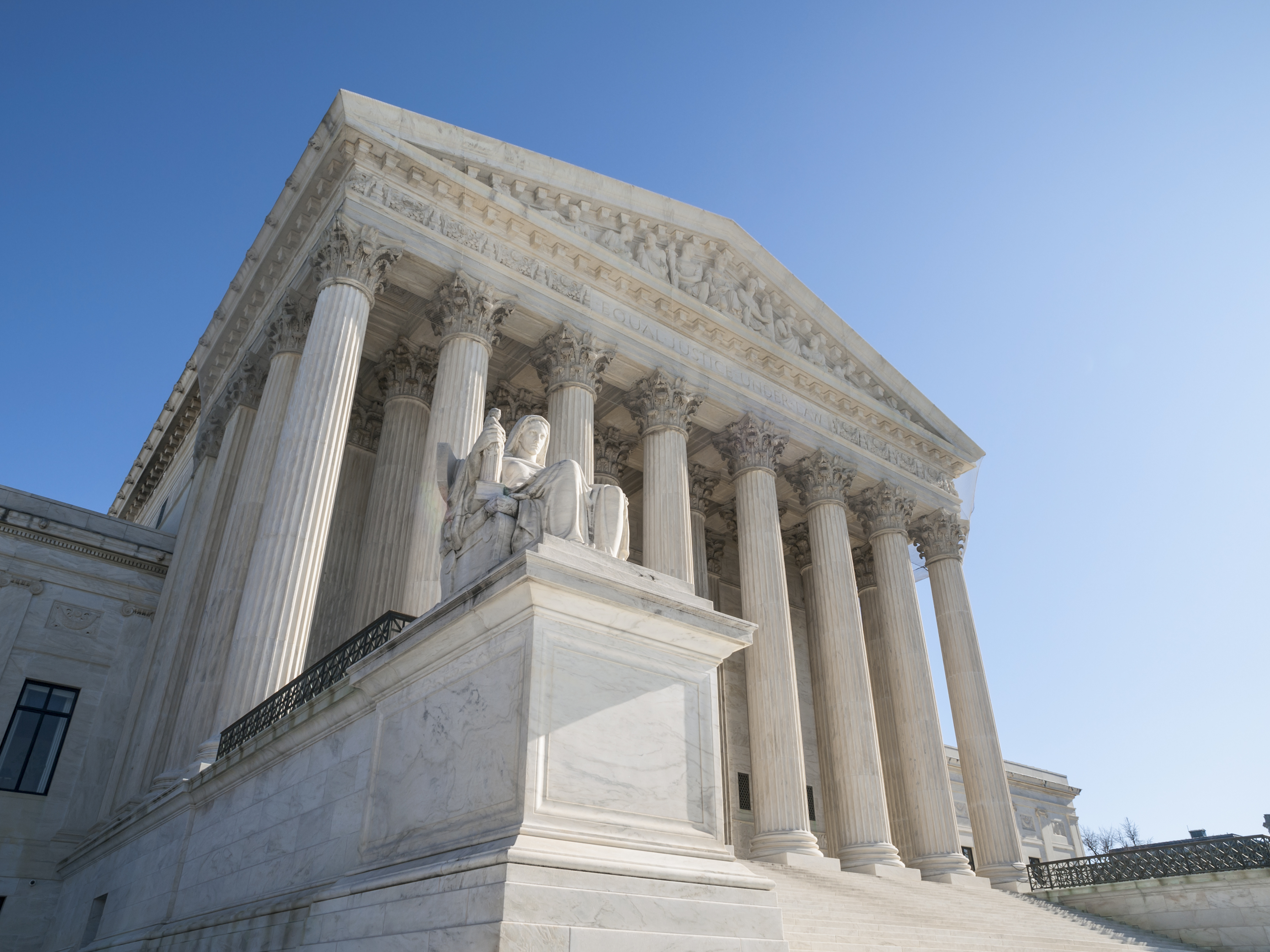
The practical impact is the 2018 elections are likely to be held under a map much more favorable to Democrats, who scored an apparent victory last week in a special election in a strongly Republican congressional district. The 2011 map that has been used this decade has resulted in Republicans consistently winning 13 of the state's 18 congressional seats.
Monday's action was the second time that the court declined to get involved in the partisan battle that has roiled Pennsylvania politics. The commonwealth's highest court earlier this year ruled that a map drawn by Republican leaders in 2011 "clearly, plainly and palpably" violated the free-and-equal-elections clause of the Pennsylvania Constitution.
The U.S. Supreme Court deliberated nearly two weeks before turning down the request to stop the map from being used in this fall's elections. Generally the justices stay out of the way when a state's highest court is interpreting its own state constitution.
The action came shortly after a three-judge federal panel also turned down a separate attempt by Republican legislators and members of Congress to stop implementation of the map.
The Supreme Court gave no reasoning in its one-sentence order, only that it was considered by all nine justices. There were no noted dissents.
Pennsylvania Gov. Tom Wolf, D, praised the courts.
"I applaud these decisions that will allow the upcoming election to move forward with the new and fair congressional maps," Wolf said in a statement. "The people of Pennsylvania are tired of gerrymandering and the new map corrects past mistakes that created unfair congressional districts and attempted to diminish the impact of citizens' votes."
Under the map drawn by a nonpartisan expert and adopted by Democratic justices of Pennsylvania's elected Supreme Court, analysts say Republicans start with an edge in 10 of the 18 districts. Pennsylvania, traditionally a purple state, has a legislature controlled by Republicans, a Democratic governor and a U.S. senator from each party.
Candidates face a Tuesday deadline to qualify to run for the redrawn seats.
The redrawing is extensive. For instance, the 18th Congressional District was in the national spotlight last week, when Democrat Conor Lamb appeared to come out ahead against Republican Rick Saccone. But the district is split four ways under the new plan.
Political analysts say the changes in Pennsylvania might aid national Democrats in their attempt to flip the House from Republican control. Democrats need to take about two dozen seats to win the majority, and Pennsylvania could provide some of that total. Six incumbents, five of them Republicans, have said they will not be on the fall ballot.
Pennsylvania's top Republicans have fought the imposition of a new plan since the state Supreme Court ruled. They have received encouragement from President Trump, who tweeted last month that they should challenge the new map "all the way to the Supreme Court, if necessary."
"Your Original was correct!" Trump tweeted. "Don't let the Dems take elections away from you so that they can raise taxes & waste money!"
Justice Samuel A. Alito Jr. turned down the state's first request Feb. 5, after the state Supreme Court ordered a new map.
After the map was adopted, the legislative leaders were back, renewing their plea that the Pennsylvania justices were taking away the power that rightfully belongs to the state legislature to draw congressional lines.
"The Pennsylvania Supreme Court conspicuously seized the redistricting process and prevented any meaningful ability for the legislature to enact a remedial map to ensure a court-drawn map," said state House Speaker Michael Turzai, R, and Senate President Pro Tempore Joseph Scarnati, R.
But those who challenged the 2011 map as an improper partisan gerrymander said the GOP lawmakers were making arguments the U.S. Supreme Court already has rejected.
"Their latest stay application is just another ploy to preserve congressional districts that violate Pennsylvania's Constitution for one more election cycle," said a brief for the League of Women Voters, adding, "It would be unprecedented for this Court to interfere with the state court's determination about its own state's law."
The challengers pointed out that qualifying has already begun under the new map and that "at least 150 candidates in all 18 new districts have begun collecting voter signatures on nomination petitions" for May 15 primaries.
Pennsylvania election officials have said changing the process again would require postponing the primaries and could cost the commonwealth $20 million.
"Today's Supreme Court ruling was a victory for Pennsylvania voters who will now be able to cast ballots for congressional candidates in districts not unconstitutionally manipulated to make them uncompetitive," said Micah Sims, Common Cause Pennsylvania's executive director.
The victory in Pennsylvania for opponents of partisan gerrymandering suggests a new mode of attack, by challenging redistricting in state courts under state constitutions.
The U.S. Supreme Court has never thrown out a state's redistricting plan by finding it so infected with partisan bias that it violates voters' constitutional rights.
But the court has on its current docket two cases - one from Wisconsin and one from Maryland - that raise the question.


 Contact The Editor
Contact The Editor
 Articles By This Author
Articles By This Author